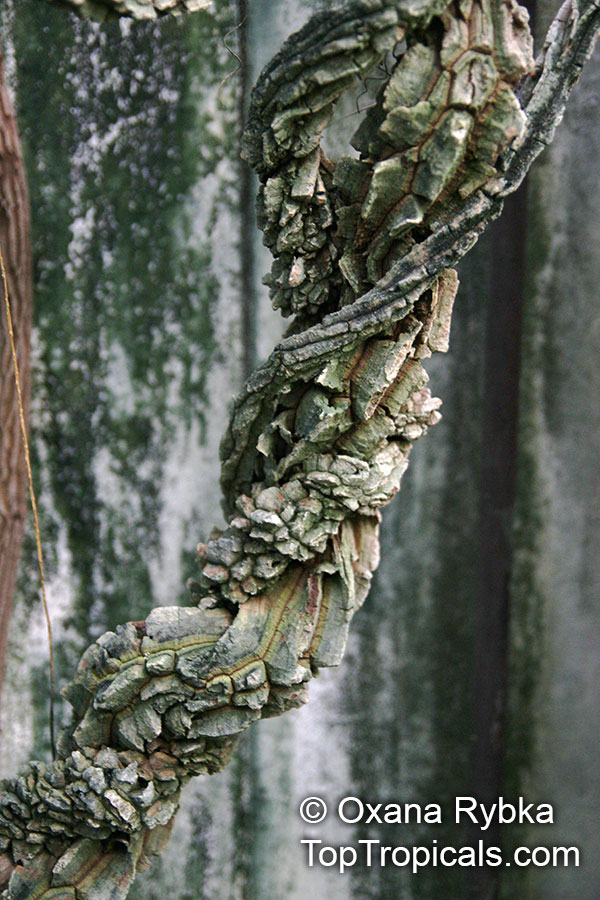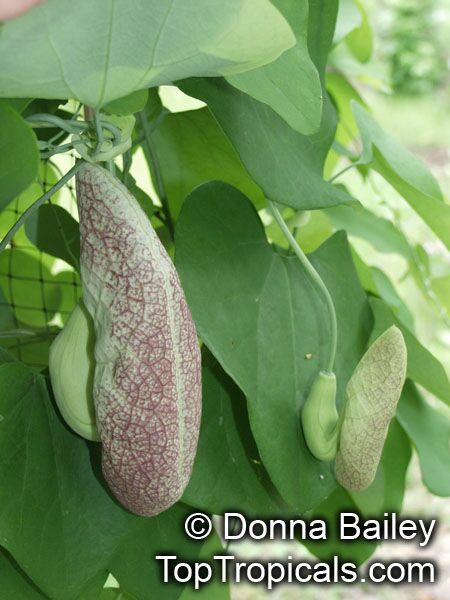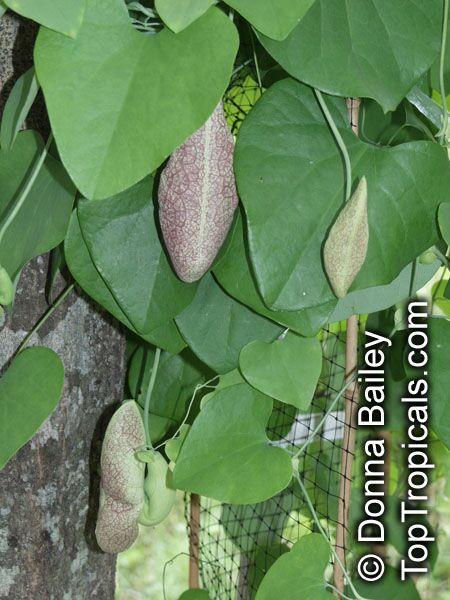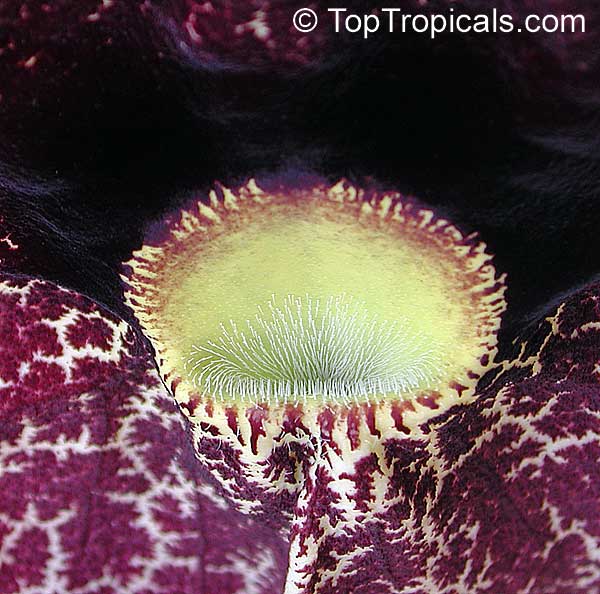Aristolochia littoralis (Elegant Dutchmans Pipe)
Top Tropicals Plant Encyclopedia
Botanical names: Aristolochia littoralis, Aristolochia elegans
Common names: Elegant Dutchmans Pipe, Calico Flower
Family: Aristolochiaceae
Origin: Brazil








This vine does best in full sun to semi-shade areas, but is able to tolerate light shade. It prefers moderate water during the growing season and drier periods during dormancy, but will become drought tolerant with maturity. Plant in well-drained soil and feed with general fertilizer in the spring. Prune to shape as desired.
The name is derived from the Greek aristos, meaning best, and lochia, meaning delivery, because it was valued in child birthing and the resemblance of the shape of the flower as a human fetus in the womb.
It grows well in USDA Zones 9-11. For cold regions, it can be grown in a pot. The vines are heavy and require strong support. Keep in a bright, warm spot indoors for winter and move it outdoors in summer when the threat of frost is gone. Water as necessary, keeping the soil slightly moist, but not soggy. Move the pot to a sheltered location in autumn before the cold weather sets in, and bring it back indoors if temperatures drop below freezing for more than a short time.
Aristolochia littoralis is an attractive plant, with its white and off-white flowers, tinged with red or crimson, and large yellowish-green pipe-like calyx. The blooms are also a favorite of butterflies and hummingbirds. This plant is butterfly larval plant. This ornamental vine is cultivated in Hawaii and other tropical areas for its colorful and unique pipe shaped flowers that are usually pollinated by flies which are attracted to the carrion-like odor and to the purple and brown color of the flowers. The striking foliage and flowers add interest to any garden. Though considered an invasive species in some areas, in more temperate regions this plant is a great addition to the garden.
Similar plants: Aristolochia littoralis (Elegant Dutchmans Pipe)
- Aristolochia arborea (Aristolochia Tree)
- Aristolochia fimbriata (Fringed Aristolochia)
- Aristolochia gibertii (Dutchman's Pipe)
- Aristolochia gigantea (Calico Flower)
- Aristolochia gigantea 'Brasiliensis' (Giant Calico Flower)
- Aristolochia grandiflora (Calico Flower)
- Aristolochia labiata (Mottled Dutchman's Pipe)
- Aristolochia leuconeura (Pipe Flower)
- Aristolochia macrophylla (Dutchman's Pipe)
- Aristolochia manchuriensis (Manchurian Pipevine)
Recommended Fertilizer: SUNSHINE Megaflor - Bloom Nutrition Booster









